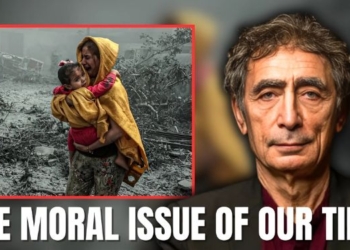
By Suzanne Falter | Tiny Buddha
For more than a week now, I’ve been immersed in how to handle the pandemic that is unfolding all around us. By now, one thing is clear to me. We are either our greatest allies or our own worst enemies at such times. How we react makes all the difference.
One friend brought home a three-inch tome all about pandemics, determined to read her way through it. Another began advising everyone on how to correctly make homemade hand sanitizer. Still another insisted that by ignoring the entire thing, she was serving herself best. “There’s too much hype,” she declared. “I refuse to buy my way through this.”
And you know, she had a point. As did everyone else.
After my wife and I realized all of our emergency supplies were seriously old, we threw them out. A week before the Bay Area released a “shelter in place” order, we waded through the crowds of people at Costco. All around us, people were frantically loading their carts with toilet paper and bottled water. The panic in the air was palpable. And we were not immune to the panic.
Like halfbacks snatching an intercepted pass, we emerged triumphantly with a hard-won six pack of disinfecting spray. It was handed to me by a clerk who spotted them hidden behind a forklift. Indeed, the people who worked at Costco were clearly being run ragged by the intensity of the crowds pouring into the place. All of them had the firm, polite efficiency of ER nurses practicing triage.
I came home determined not to panic, and yet found I was now glued to the major media. I couldn’t stop checking it hourly as if taking my eyes off of the situation could prove fatal. Finally, when I could take it no longer, I turned to a soothing activity—a jigsaw puzzle—and I promptly lost it.
As I sat there, weeping into my half-finished picture of the Grand Canyon, I realized the coronavirus has left me stressed out and immeasurably sad. Our world is, indeed, having a crisis and there will be more suffering ahead. Perhaps even a lot of suffering.
I simply couldn’t avoid the truth any longer. Taking a deep breath, I allowed myself to simply melt down as much as I needed to. I had a good long cry, and half an hour later I felt remarkably better.
Instantly, I became clear-headed enough to carve a path forward for myself. This one did not involve binge shopping, or massive media consumption. Instead, I developed my own COVID-19 Self-Care Checklist. For along with the handwashing and disinfecting, I find I must take care of my vulnerable, tender heart as well.
In fact, I suggest we all do. Here’s how I now proceed.
1. Limit media consumption to a sane amount.
Only you know what that means. But if you’re dreaming about media, leaping in in the middle of the night, or binging on it until you feel slightly sick, it’s time to back off. Such constant checking does give us a sense of control, but beware. Even though the news moves quickly, we do not need to consume media than a few times per day. Any more than that just creates more anxiety.
2. Get together virtually.
This idea is catching on quickly and for good reason. A paid Zoom account ($15 per month) enables you to have group meetings of up to 100.
When you click on the Gallery view (top right corner) you can see every person in attendance. Consider using this for virtual hang outs including tea parties, happy hours, coffee klatches, book clubs, and dinner parties. I’m finding it’s a great way to stay in touch with faraway relatives—we’re ‘seeing’ each other more than ever suddenly. And if money’s tight, there’s always FaceTime and Skype
3. Namaste nods work just as well as ‘foot shakes’ and elbow bumps.
Alternative greetings now abound as we’re no longer meant to hug. My sister suggested the Namaste nod, and I have to say, doing so when I greet someone makes my heart feel ever so much better. It feels right for these times somehow.
4. Walk in natural spaces.
I’m blessed to live in the Bay Area, where wonderful parks and beaches abound, and we can access them with walks, runs, and hikes even with our “shelter in place” order. Here’s what I love about going out into nature: there are no hard surfaces teeming with germs to hang on to, and it’s easy to keep that critical three to six foot distance from others.
Furthermore, a 2014 Finnish study found that strolling in a park or other natural setting for just twenty minutes provides significantly more stress relief than walking on city streets.











![The Infinite Moment in Time: It is Always Now – Sam Harris [VIDEO]](https://consciouslifenews.com/wp-content/uploads/2020/03/time-1-75x75.jpg)




